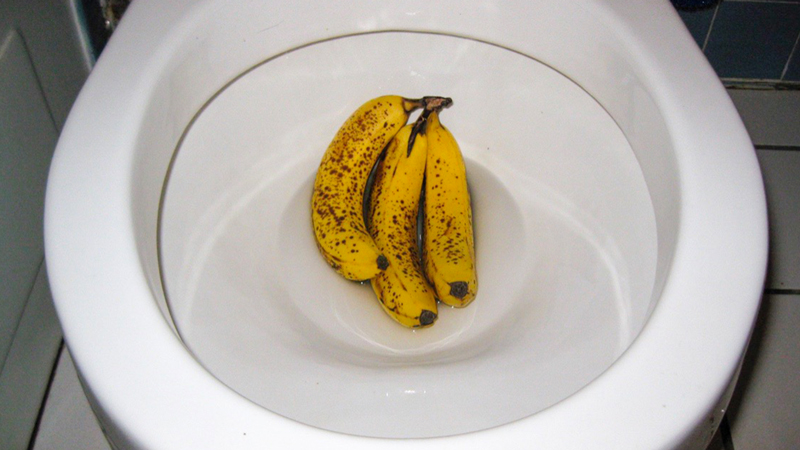Can You to Dispose of Food in the Toilet?
Can You to Dispose of Food in the Toilet?
Blog Article
Presented here further down yow will discover additional incredibly good expertise about Think Twice Before Flushing Food Down Your Toilet.

Intro
Many people are commonly confronted with the issue of what to do with food waste, especially when it comes to leftovers or scraps. One common inquiry that emerges is whether it's okay to purge food down the bathroom. In this post, we'll explore the reasons that individuals could consider purging food, the repercussions of doing so, and different methods for proper disposal.
Reasons individuals might think about purging food
Absence of awareness
Some individuals may not recognize the potential injury caused by purging food down the toilet. They might incorrectly believe that it's a safe method.
Ease
Flushing food down the toilet might appear like a fast and easy option to disposing of undesirable scraps, especially when there's no nearby trash bin readily available.
Negligence
In many cases, people may merely select to flush food out of sheer idleness, without taking into consideration the consequences of their activities.
Effects of flushing food down the toilet
Ecological impact
Food waste that winds up in waterways can contribute to pollution and injury water communities. Furthermore, the water used to flush food can strain water resources.
Pipes problems
Purging food can bring about clogged up pipes and drains pipes, causing costly pipes repair services and aggravations.
Sorts of food that must not be purged
Fibrous foods
Foods with fibrous structures such as celery or corn husks can obtain entangled in pipelines and create blockages.
Starchy foods
Starchy foods like pasta and rice can absorb water and swell, causing obstructions in pipelines.
Oils and fats
Greasy foods like bacon or food preparation oils ought to never be flushed down the commode as they can solidify and trigger obstructions.
Proper disposal approaches for food waste
Using a waste disposal unit
For homes furnished with garbage disposals, food scraps can be ground up and flushed with the pipes system. Nonetheless, not all foods appropriate for disposal in this fashion.
Recycling
Particular food product packaging materials can be reused, lowering waste and reducing environmental effect.
Composting
Composting is an environmentally friendly method to throw away food waste. Organic materials can be composted and used to enrich soil for horticulture.
The relevance of proper waste management
Minimizing environmental injury
Proper waste monitoring techniques, such as composting and recycling, aid decrease air pollution and preserve natural deposits for future generations.
Safeguarding pipes systems
By staying clear of the practice of flushing food down the toilet, property owners can stop pricey plumbing fixings and preserve the stability of their plumbing systems.
Verdict
Finally, while it may be tempting to flush food down the bathroom for benefit, it is very important to comprehend the possible repercussions of this activity. By taking on appropriate waste management methods and taking care of food waste responsibly, people can contribute to much healthier plumbing systems and a cleaner setting for all.
FLUSH FOOD DOWN THE TOILET?
FLUSHING FOOD CAN CAUSE BLOCKED DRAINS IN YOUR HOME
All of the plumbing fixtures in your home are connected to the same sewer pipe outside of your home. This outdoor sewer pipe is responsible for transporting all the wastewater from your home to the Council sewer mains. Even small pieces of food that go down the kitchen sink can cause problems for your sewer. It should therefore be obvious that flushing larger bits of food, such as meat, risks a clog in either the toilet itself or the sewer pipes. Flushing greasy food is even more problematic because oil coagulates when it cools, coating the interior lining of your pipes.
THE TOILET IS NOT A BIN
Food isn’t the only thing that people shouldn’t be flushing down the toilet. People use the toilet to dispose of all kinds of things such as tampons, makeup wipes, dental floss, kitty litter and even underwear. Water goes to great lengths to educate residents about the high costs and stress placed on wastewater treatment systems simply from people flushing the wrong stuff down the toilet. It costs taxpayers millions of dollars each year, and homeowners thousands in blocked drain repairs.
FLUSHING FOOD IS A WASTE OF WATER
Flushing food is a waste of our most precious resource - water. In June this year Level 1 water restrictions were introduced to protect water supply from drought conditions. Much of New South Wales continues to be affected by prolonged drought with recent figures revealing up to 97 per cent of the state remains in drought. Depending on whether you have a single or dual flush toilet, every single flush uses between five and 11 litres of water. In the current climate this is a huge amount of water to be wasting on flushing food that should be placed in the bin (or better yet, the compost).
https://www.jabplumbingsolutions.com.au/blog/can-you-flush-food-down-the-toilet

I ran across that article on Think Twice Before Flushing Food Down Your Toilet while scouting around the search engines. Those who enjoyed our blog post please don't forget to pass it around. Thanks a lot for being here. Return soon.
Instant Quote Report this page